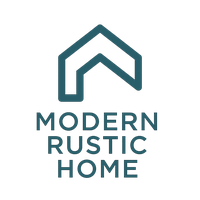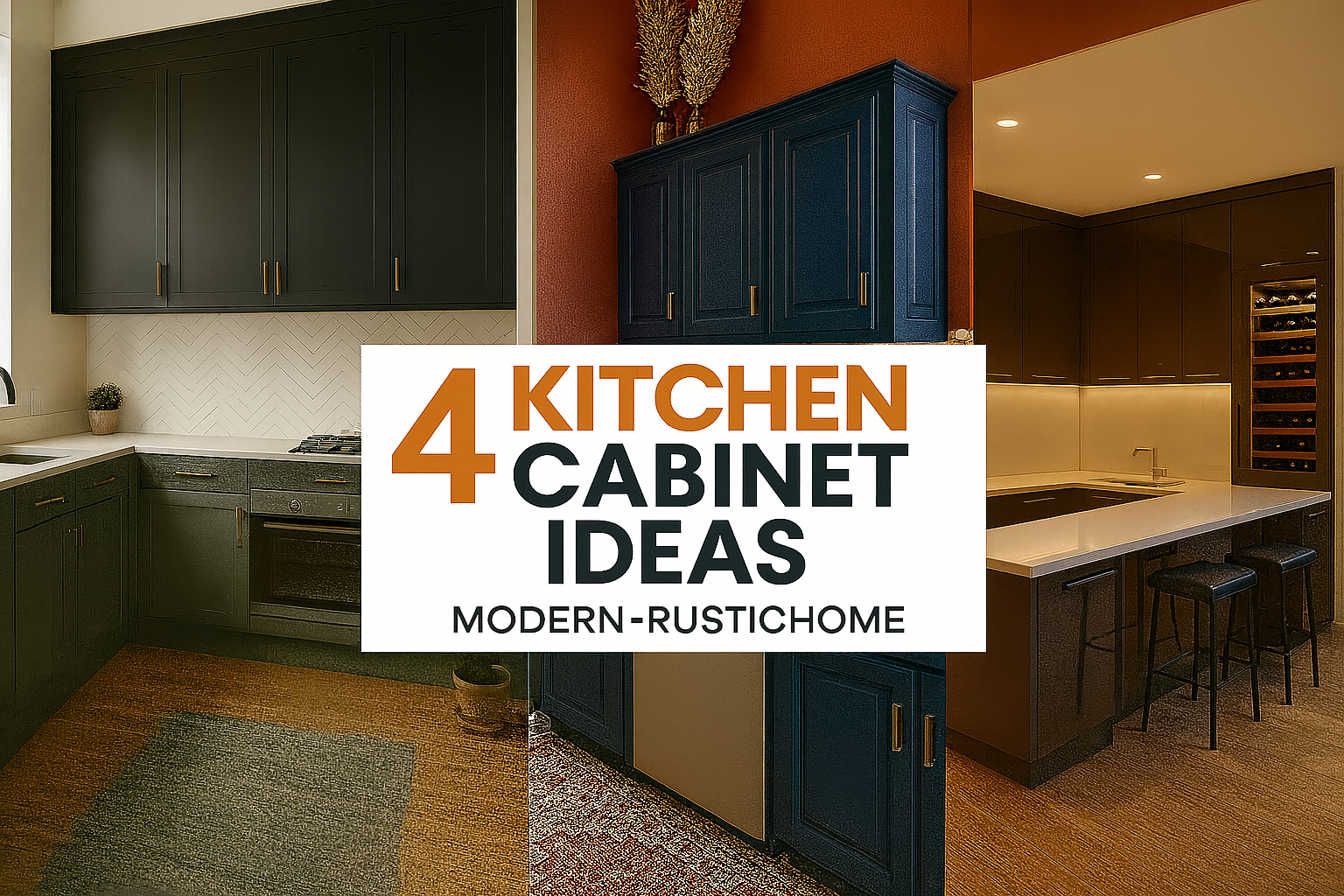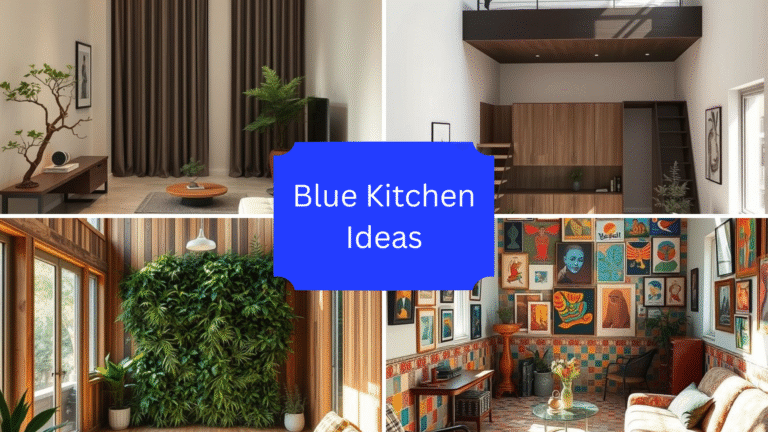Best Paint for Kitchen Cabinets (2025 Guide)
I still remember the first time I decided to repaint my kitchen cabinets. The wood was worn, the color was dated, and every scratch seemed to scream “1998.” I thought a fresh coat of paint would be a weekend job—quick, easy, done. Oh, how wrong I was.
Choosing the best paint for kitchen cabinets isn’t just about grabbing whatever’s on sale at the hardware store. If you don’t pick the right one, you’ll end up with peeling corners, streaky brush marks, and worse paint that chips every time you open a drawer. In this guide, I’ll walk you through the exact types of paints that have actually worked for me, and which ones I’ll never use again. From finishes to brands, we’ll cover it all so you can make the smartest (and most durable) decision for your kitchen.

Best Paint for Kitchen Cabinets (2025 Guide)
What Makes a Paint Ideal for Kitchen Cabinets?
Painting cabinets isn’t like painting walls. Cabinets get touched, slammed, splashed, and wiped—almost every day. So you need paint that can handle all that abuse without losing its shine or peeling at the edges.
Key Factors That Matter (Finish, Durability, VOC)
The three biggest things I look at before choosing any cabinet paint:
- Finish: Satin or semi-gloss is the sweet spot—matte looks great but stains easily, while high gloss can look too flashy.
- Durability: Some paints harden better than others. Look for products that cure into a hard finish, like alkyd or hybrid enamel paints.
- VOC Levels: If you’re painting indoors, low-VOC paints are essential unless you love the smell of a chemical factory.
A good cabinet paint not only survives daily wear but also stays vibrant for years. I once painted a set of white cabinets in a rental using high-VOC oil-based paint—they looked great, but the smell took two weeks to fully leave the house.
Surface Types and Paint Compatibility
Before you dip that brush, you need to know what you’re painting.
- Wood Cabinets: Ideal surface. Just sand lightly and prime.
- Laminate: You must use a bonding primer or the paint won’t adhere.
- Previously Painted Cabinets: Clean them thoroughly and rough up the surface before repainting.
One mistake I made early on was applying latex paint directly to shiny laminate—looked amazing for a day, then peeled off like a sticker.
Prep Work That Affects Paint Results
Want a smooth finish? You’ll spend 70% of your time on prep:
- Degrease with TSP or vinegar solution
- Sand lightly to remove sheen
- Fill any dings or gaps with wood filler
- Always prime, unless your paint includes a built-in primer
I also learned not to rush between coats. Paint may feel dry to the touch but still be soft underneath. Let each layer cure, not just dry.
Top Paint Types for Kitchen Cabinets
Not all paints are built the same. I’ve used everything from traditional oil-based formulas to trendy chalk paints, and each one brings its own strengths and frustrations. Let’s break down the most common types you’ll encounter and where they shine (or don’t).
Oil-Based Paints – Timeless Durability, But With a Catch
My first cabinet painting project used oil-based paint—and I’ll admit, the finish was beautiful. It leveled out like glass, dried rock hard, and held up to years of daily wear. But the downsides? Oh, they were plenty.
- Long dry time (think overnight, not hours)
- Strong fumes—windows must stay open
- Difficult cleanup (you’ll need mineral spirits)
If you’re a perfectionist who doesn’t mind a longer project, oil-based paint still delivers the most professional finish. But I personally wouldn’t use it again unless it was a garage or off-site space.
Latex Paints – Great for DIYers, But Needs Reinforcement
Latex paint is what you’ll see at every home store—and it’s tempting because it’s:
- Low odor
- Dries fast
- Cleans up with water
But here’s the deal: It doesn’t harden like oil-based paint. Without a strong top coat, it can get scratched easily. I painted a set of white kitchen cabinets in latex, and within a month, the silverware drawer already had rub marks.
Pro Tip: Always top it off with a water-based polyurethane or a clear enamel top coat.
Alkyd and Hybrid Enamel Paints – Best of Both Worlds
These have become my favorite. Paints like Benjamin Moore Advance and Sherwin-Williams Emerald Urethane go on like latex but cure like oil. That means:
- Water clean-up ✅
- Smooth, professional finish ✅
- No strong smell ✅
- Excellent durability ✅
They’re a bit pricier and take longer to cure (3–5 days to fully harden), but the results are worth every minute.
Chalk Paint and Milk Paint – Style Over Strength
If you want a farmhouse or vintage vibe, these are your go-to. I’ve used chalk paint with a wax finish for a rustic cottage kitchen. It looked amazing in photos—but in real life, any splash or scratch left a mark.
Chalk paint is easy to apply with minimal prep, but don’t skip the protective top coat (like a polycrylic or wax sealer). It’s not the best choice for heavy-use kitchens unless you want to repaint every few months.
Best Cabinet Paint Brands in 2025
I’ve tested more cabinet paints than I care to admit—some left brush marks, others chipped in weeks. But a few brands consistently stood out. Here are my top picks based on durability, ease of application, and long-term performance.
Benjamin Moore Advance
If you want that furniture-grade finish, this is the one to beat.
- Type: Waterborne alkyd enamel
- Finish Options: Satin, semi-gloss, high-gloss
- Best For: Long-lasting durability with a smooth, self-leveling finish
- VOC: Low
- Clean-up: Water
I used this on a set of dark blue cabinets for a rental unit three years ago—they’ve seen spills, steam, and toddler tantrums, and they still look brand new. The only downside? It takes time to cure (about 5–7 days for full hardness), so be patient before reattaching doors or using the kitchen fully.
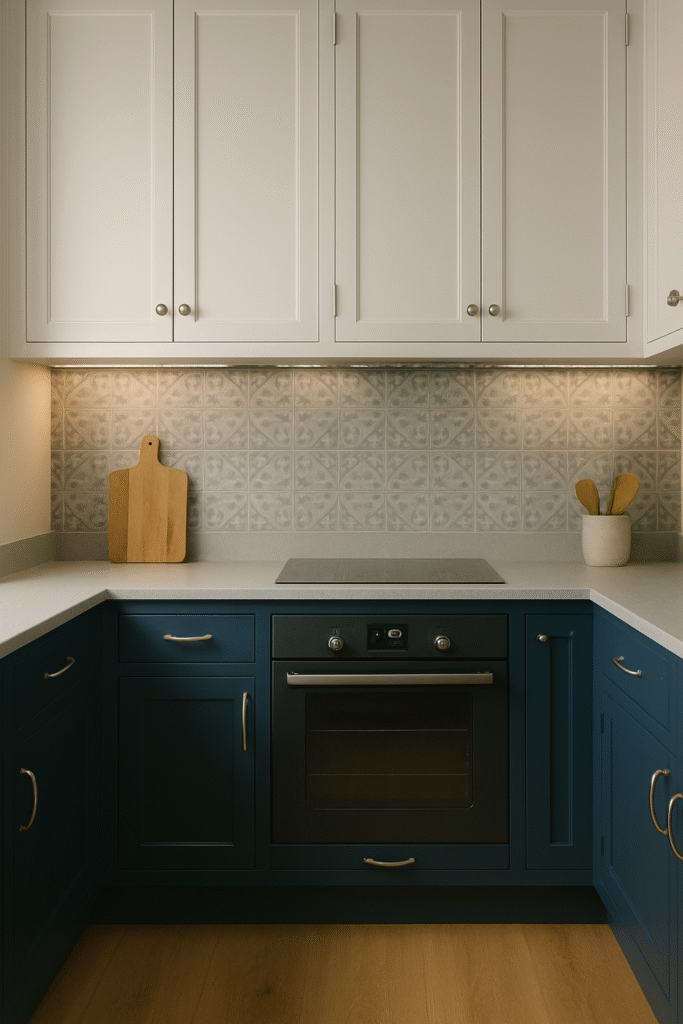
Sherwin-Williams Emerald Urethane Trim Enamel
I call this the “contractor’s favorite.” It’s just as good as Advance but with slightly quicker dry times.
- Type: Urethane-modified alkyd
- Finish Options: Satin, semi-gloss, gloss
- Best For: High-traffic homes or faster projects
- VOC: Low
- Clean-up: Water
What I like most is how well it adheres—even to slick surfaces after proper prep. The self-leveling is decent, and it holds up to scrubbing without losing its sheen.
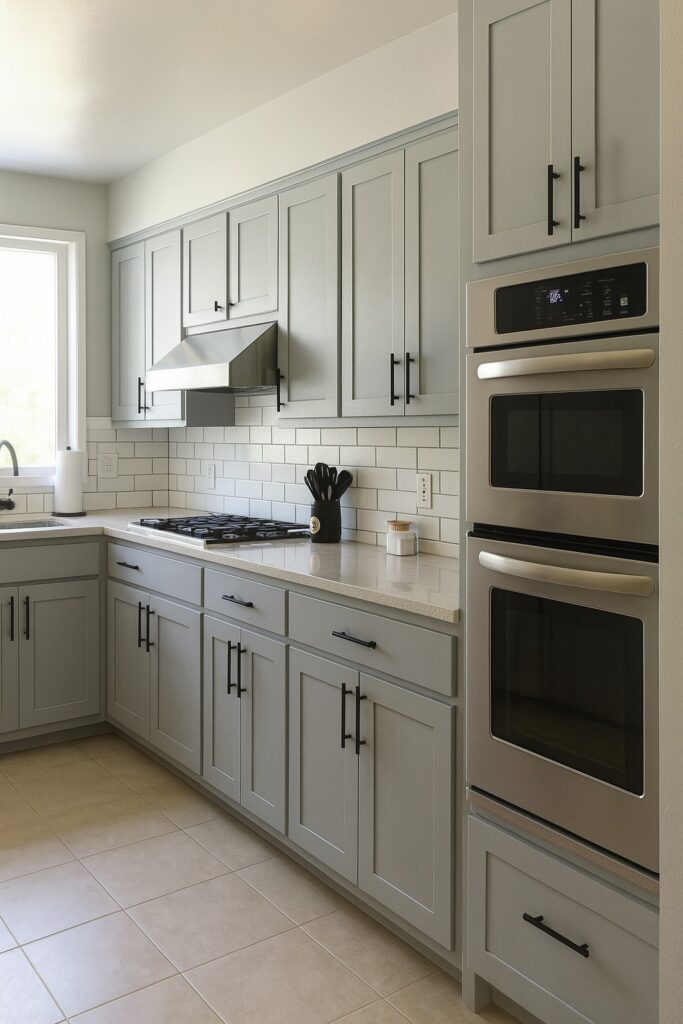
Behr Alkyd Semi-Gloss Enamel (Home Depot)
If you’re on a budget but still want solid results, this one punches above its price.
- Type: Water-based alkyd
- Finish Options: Semi-gloss
- Best For: DIYers who want easy application and durability
- VOC: Low
- Clean-up: Water
I used this for my friend’s kitchen refresh. It wasn’t quite as smooth as Advance or Emerald, but with a foam roller and primer underneath, the results were surprisingly professional-looking.
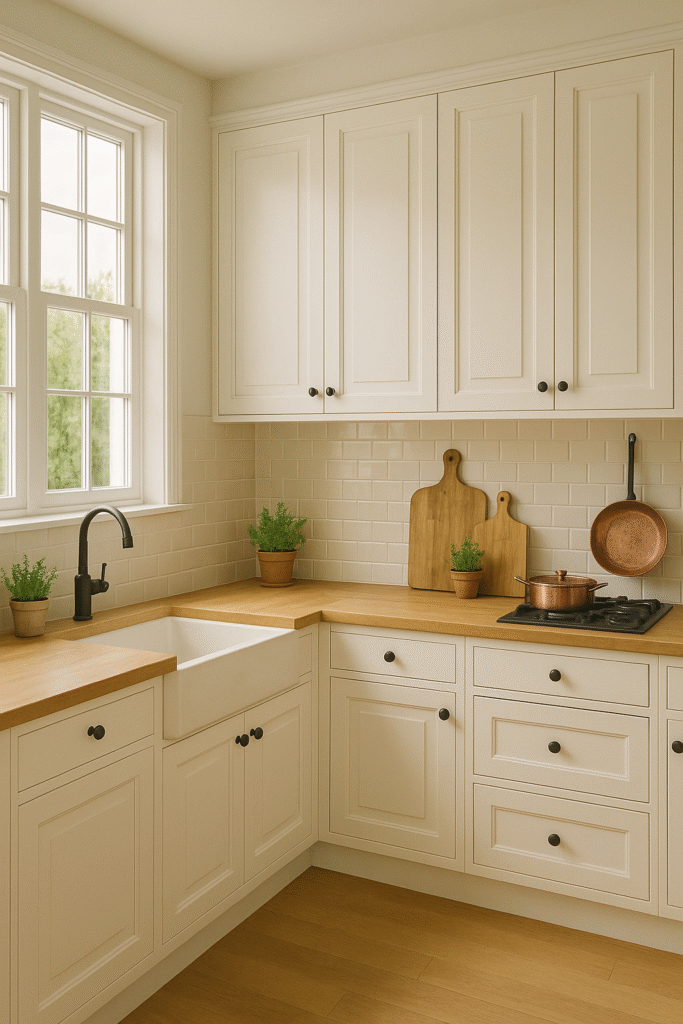
INSL-X Cabinet Coat
This one’s underrated. It’s designed specifically for cabinets and trim, and the name says it all.
- Type: Acrylic enamel
- Finish Options: Satin
- Best For: Fast results with a professional feel
- VOC: Low
- Clean-up: Water
It has excellent adhesion, levels nicely, and dries faster than most others on this list. I’ve recommended it to clients who wanted same-day projects done without sacrificing quality.
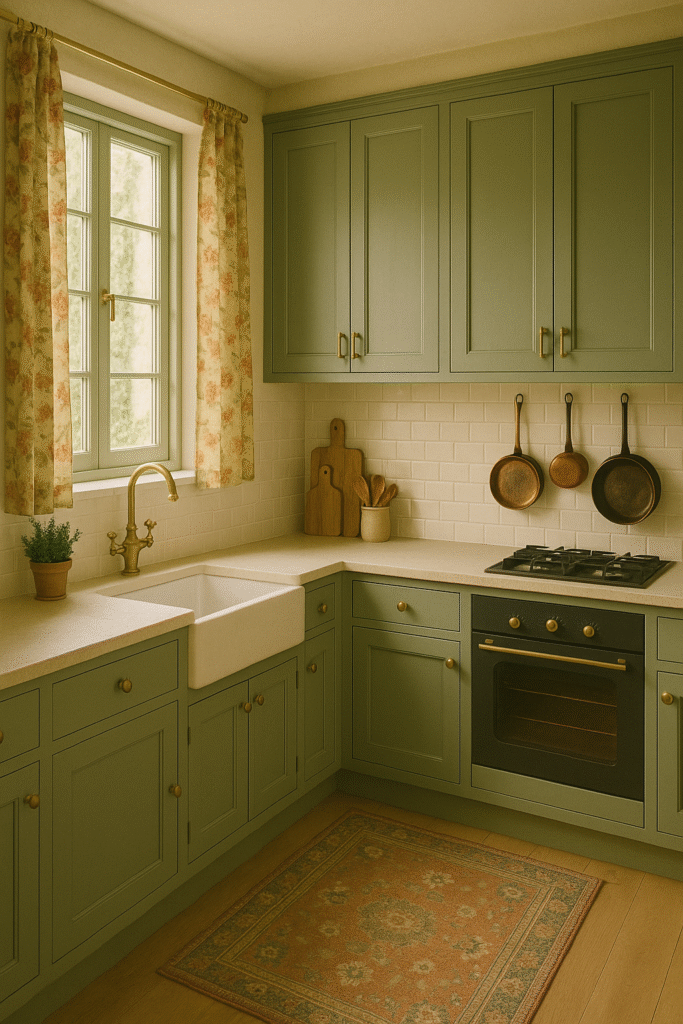
Choosing the Right Finish (Satin, Semi-Gloss, Matte)
Most people focus on paint color—but the finish you choose can completely change how your cabinets look and how they hold up. I’ve tried all three on different projects, and here’s what I’ve learned the hard way.
Satin – Most Popular and Balanced
Satin is my personal go-to. It gives off a soft glow without being too shiny and hides imperfections better than semi-gloss. It also has enough durability to withstand regular wiping, cooking steam, and daily use.
Why I love it:
- Doesn’t highlight small dents or scratches
- Easier to clean than matte
- Looks modern without being flashy
I used satin in a light sage green on a client’s cottage kitchen, and it gave a timeless, soft look that didn’t scream for attention—but still felt polished.
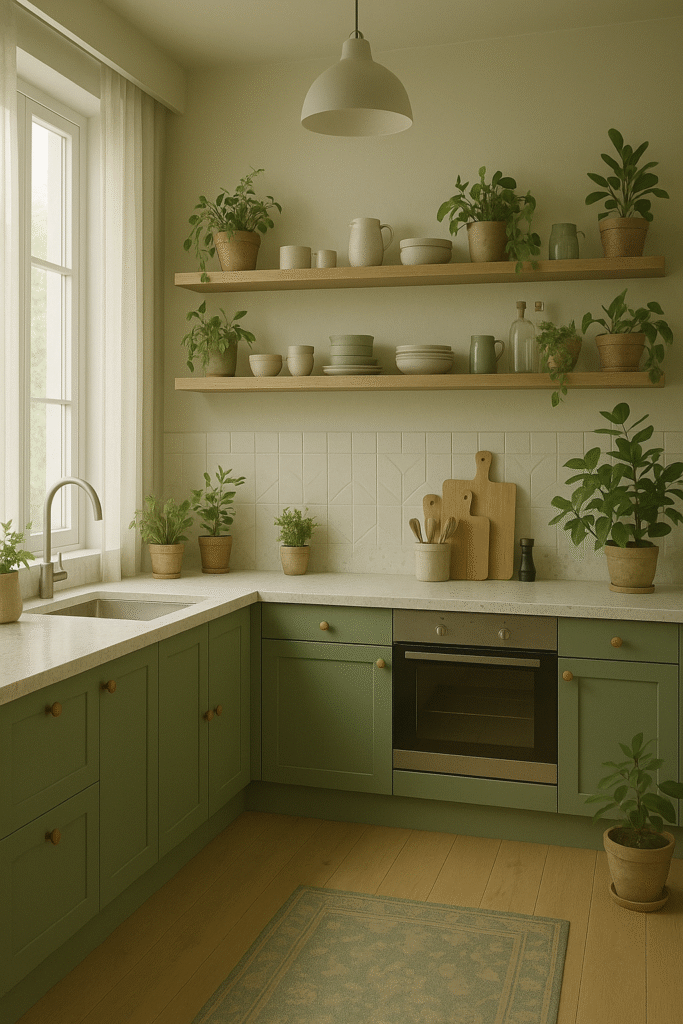
Semi-Gloss – Shine and Cleanability
Semi-gloss is what most professionals use in busy kitchens. It reflects more light, which can make the space feel brighter and more open—but it also shows every brush mark, fingerprint, and drip if you’re not careful.
Why you might want it:
- Easiest finish to clean
- Holds up extremely well to moisture and grease
- Ideal for high-traffic kitchens or big families
Just know that surface prep is critical. I once skipped sanding, and every roller bump showed under semi-gloss like a spotlight.
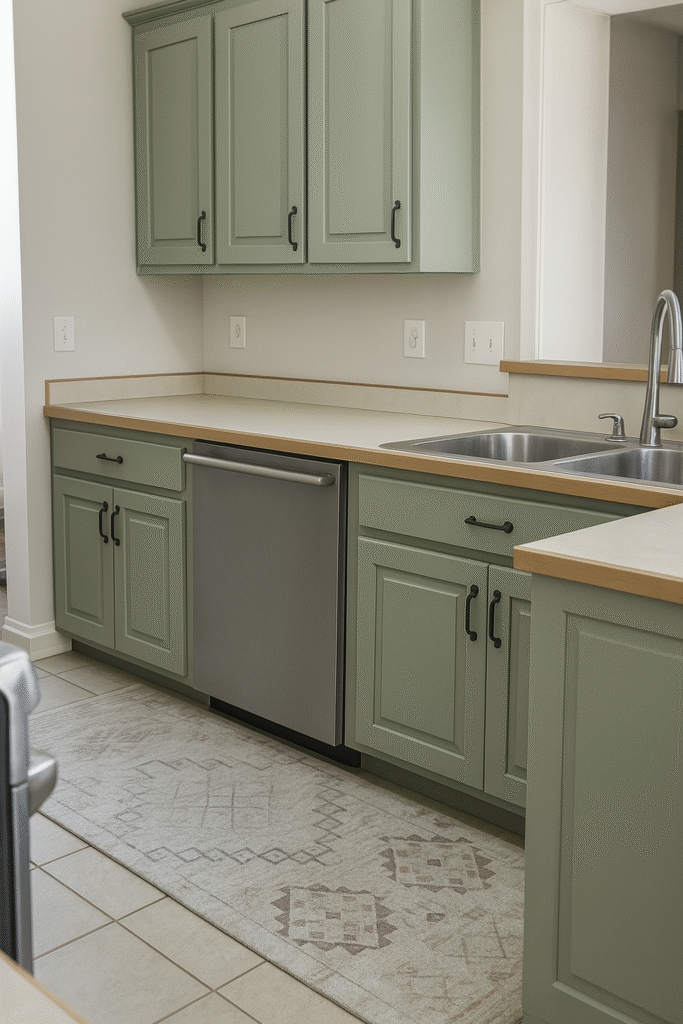
Matte – Trendy, But High-Maintenance
Matte finishes are having a design moment. They look minimal, moody, and modern. But here’s the truth: they’re not built for kitchens unless you baby your cabinets.
Why to be cautious:
- Hard to clean—stains and smudges can be permanent
- Shows grease easily
- Less durable over time
I once painted matte navy lowers for a bachelor pad kitchen. It looked amazing—for exactly a week. Then came the first curry night, and the aftermath was… rough.
Want to help your reader choose? Here’s a quick cheat sheet:
| Finish | Durability | Cleanability | Aesthetic | Best For |
| Satin | ✅✅✅ | ✅✅ | Soft & Balanced | Most kitchens |
| Semi-Gloss | ✅✅✅✅ | ✅✅✅✅ | Sleek & Bright | High-use or rental units |
| Matte | ✅ | ❌ | Trendy & Warm | Low-use, design kitchens |
Application Methods: Spray, Brush, or Roll?
Once you’ve picked your paint and finish, it’s time to talk tools. I’ve used everything from $3 brushes to high-end sprayers, and each method has its own pros, cons, and learning curves.
Paint Sprayer – Smoothest Finish, Steepest Setup
If you want that “did-a-pro-do-this?” finish, a paint sprayer is the way to go. It lays down even coats without brush marks and gets into grooves and corners effortlessly.
But here’s the catch: prep is brutal.
- You’ll need to mask off walls, countertops, and floors
- Overspray gets everywhere if you’re not careful
- Cleanup is time-consuming
I once used a sprayer in a client’s garage on 20 cabinet doors—looked stunning, but setup took longer than the actual painting. If you’ve got the space and time, it’s worth it. Otherwise…
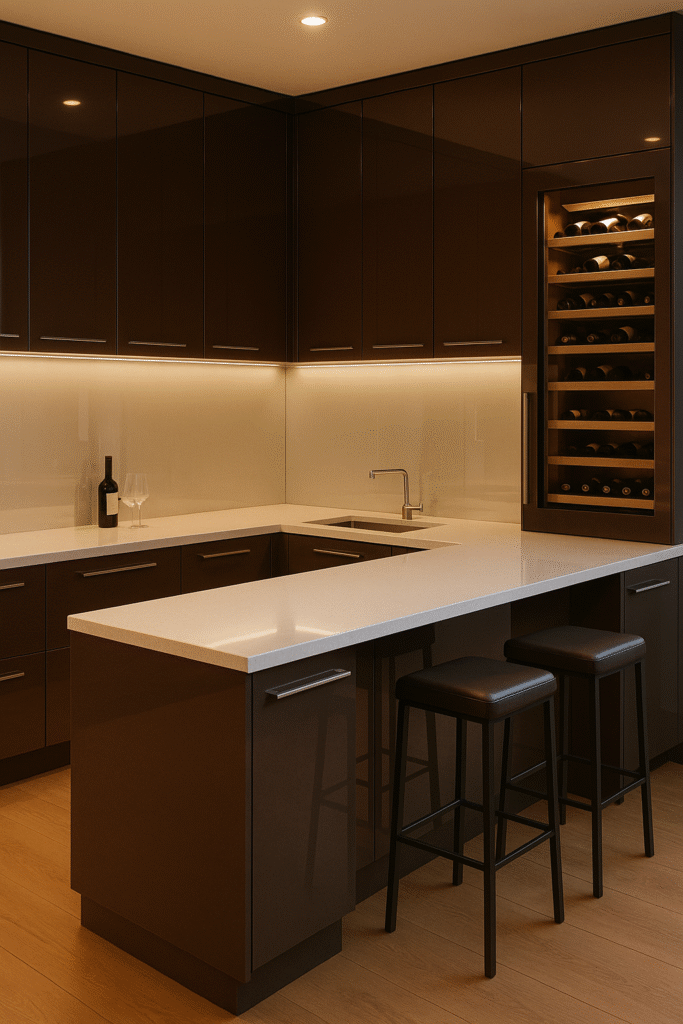
Brush – Great for Corners, Risk of Marks
Brushes are budget-friendly, beginner-friendly, and great for detailed areas like cabinet trim and raised panels. But they also make it very easy to leave brush strokes behind—especially with thicker paints.
My tips:
- Use a high-quality angled synthetic brush
- Avoid overloading the brush with paint
- Always brush in the direction of the wood grain
I’ve learned that with the right brush and steady hands, even a DIY job can look polished—especially if you follow up with a foam roller.
Foam Roller – Smooth Flat Surfaces
Foam rollers are ideal for the flat surfaces of cabinet doors and drawer fronts. They help avoid brush marks and go on faster than a brush alone. I usually use them in tandem—brush for edges, roller for faces.
Best results:
- Use thin coats (2–3 light coats are better than 1 thick one)
- Sand lightly between coats for that ultra-smooth feel
- Let each layer dry fully before recoating
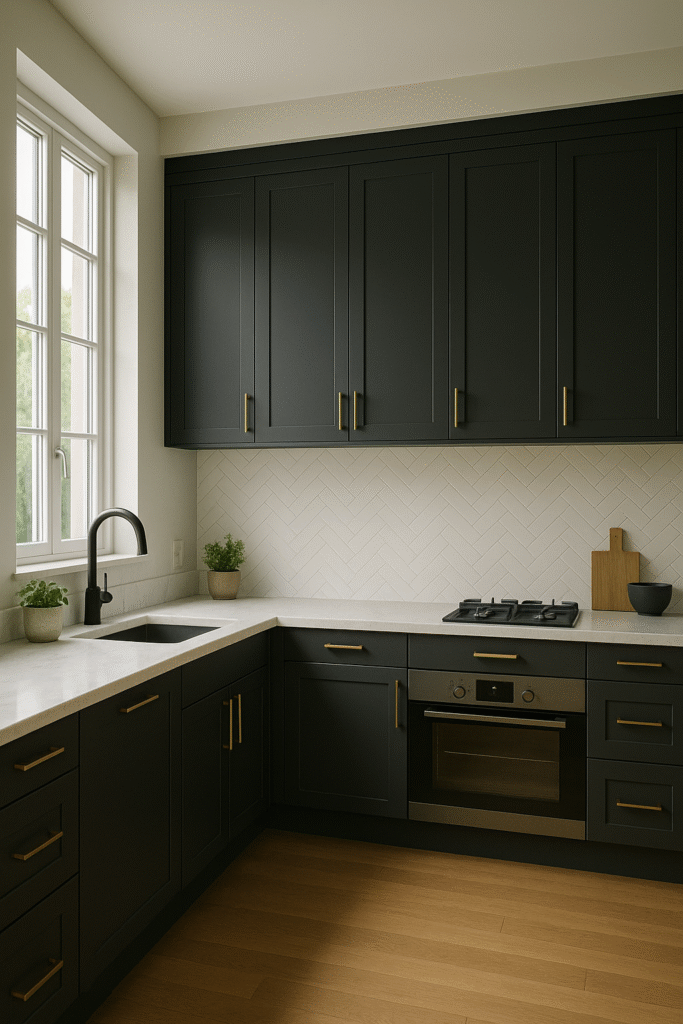
Common Mistakes to Avoid When Painting Cabinets
After painting over a dozen kitchens, I’ve learned that it’s often not the paint that fails—it’s the process. Here are the most common (and costly) mistakes I’ve seen, made, and fixed over the years.
Skipping the Prep Work
This is the #1 sin of cabinet painting. I once painted over greasy kitchen cabinets in a rental—looked great at first. Then the paint started bubbling and peeling within a week.
You must:
- Clean with a degreaser like TSP or vinegar + dish soap
- Remove all handles and hinges
- Sand the surface lightly
- Fill any gouges or deep scratches
- Use painter’s tape carefully to protect surrounding areas
Rushing prep is like baking a cake without measuring—results will always suffer.
Not Using a Primer
Many people think a “paint and primer in one” will save them time. For cabinets? Not a chance. Primer is critical to:
- Ensure adhesion (especially on slick or laminate surfaces)
- Block out stains or wood tannins
- Help paint last longer without chipping
If your paint doesn’t stick well, it’s almost always a primer problem.
Using the Wrong Paint Type
I’ve seen people use flat wall paint on cabinets. That stuff isn’t made to handle grease, wiping, or finger traffic. It’ll stain, scratch, and wear down in no time.
Cabinets need paint that cures into a hard surface—like alkyd enamel, urethane, or at the very least, a high-quality latex with top coat. Always check the label to make sure it’s designed for cabinetry or trim.
Skipping a Top Coat (When Needed)
If you’re using chalk paint, milk paint, or standard latex, a top coat is non-negotiable. It protects the finish from water, heat, and scratches.
Some cabinet paints, like Benjamin Moore Advance or INSL-X Cabinet Coat, don’t need a separate top coat. But for most others, a water-based polyurethane is your best friend.
Not Letting the Paint Cure
Paint can feel dry but still be soft inside. That’s because it hasn’t fully cured. Cabinets slammed shut or touched too early will scuff, dent, or peel.
My rule:
- Let paint dry for at least 8 hours between coats
- Allow 5–7 days to fully cure before reinstalling doors or heavy use
It’s worth the wait—trust me.
Final Recommendation: Best Paint by Project Type
With so many paint types, finishes, and brands out there, it’s easy to feel overwhelmed. So, to make your life easier, here’s a no-nonsense guide I created based on years of cabinet painting in different homes, budgets, and styles.
Whether you’re a DIY newbie or aiming for showroom-level results, there’s a perfect match below.
Quick Pick Table: My Paint Picks by Project Type
| Project Type | Best Paint Option | Why It’s a Good Fit |
| DIY on a Budget | Behr Alkyd Semi-Gloss Enamel | Easy to apply, affordable, solid durability |
| Professional Finish | Benjamin Moore Advance | Ultra-smooth, levels beautifully, long-term results |
| Rental Refresh | Sherwin-Williams Emerald Urethane | Durable, quick-drying, easy maintenance |
| Low-Traffic Kitchens | Latex + Polyurethane Top Coat | Affordable with added protection |
| Rustic/Vintage Look | Chalk or Milk Paint + Top Coat | Great for aesthetic-focused cabinets |
| Fast One-Day Job | INSL-X Cabinet Coat | Dries fast, solid hardness, minimal brush strokes |
